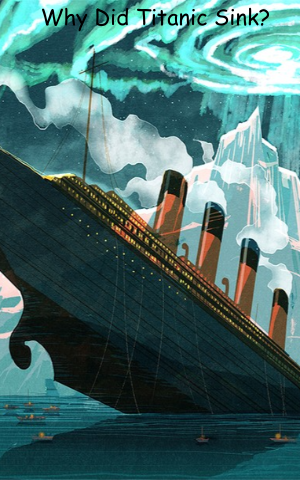Why Did Titanic Sink?
Why Did Titanic Sink?


An estimated 100,000 people gathered at the dock in Belfast, Ireland on March 31, 1911, to watch the launch of the Royal Mail Ship (RMS) Titanic. Considered to be an “unsinkable” ship, Titanic was the largest and most luxurious cruise liner of its day, measuring more than 882 feet long from prow to stern the length of four city blocks and 175 feet high, and weighing more than 46,000 tons. It boasted state-of-the-art technology, including a sophisticated electrical control panel, four elevators, and an advanced wireless communications system that could transmit Morse Code.
Yet on the night of April 14, 1912, just four days after leaving Southampton, England on its maiden voyage to New York, the Titanic struck an iceberg off the coast of Newfoundland and sank. Now, more than a century after the Titanic went down, experts are still debating possible causes of this historic disaster that took the lives of more than 1,500 passengers and crew. Most of them agree that only a combination of circumstances can fully explain what doomed the supposedly unsinkable ship.
It was traveling too fast.
From the beginning, some blamed the Titanic’s skipper, Captain E.J. Smith, for sailing the massive ship at such a high speed (22 knots) through the iceberg-heavy waters of the North Atlantic. Some believed Smith was trying to better the crossing time of Titanic’s White Star sister ship, the Olympic. But in a 2004 paper, engineer Robert Essenhigh speculated that efforts to control a fire in one of the ship’s coal bunkers could have explained why the Titanic was sailing at full speed.
The wireless radio operator dismissed a key iceberg warning.
Less than an hour before the Titanic hit the iceberg, another nearby ship, the Californian, radioed to say it had been stopped by dense field ice. But as the warning didn’t begin with the prefix “MSG” (Master’s Service Gram), which would have required the captain to directly acknowledge receiving the message, the Titanic’s radio operator Jack Phillips considered the other ship’s warning non-urgent and didn't pass it along.
It may have taken a fatal wrong turn.
According to a claim made in 2010 by Louise Patten (the granddaughter of the most senior Titanic officer to survive, Charles Lightoller), one of the ship’s crewmembers panicked after hearing the order to turn “hard-a-starboard” in order to avoid the approaching iceberg. Because ships at the time operated on two different steering order systems, he became confused and turned the wrong way directly toward the ice. Patten included this version of events, which she said she heard from her grandmother after Lightoller’s death, in her fictionalized account of the Titanic disaster, Good as Gold.































